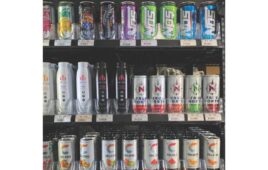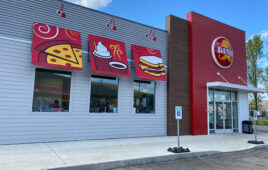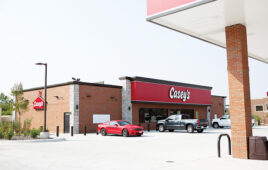Tips for protecting sales and profits in today’s climate.
Intensifying competition for the morning daypart and escalating commodity costs for coffee drinks have forced convenience retailers to make trade-offs between pricing and profits. This is no small issue as hot dispensed beverages are strategically vital to a retailer’s morning business segment and fresh foods program.
Defending the current business is a key step to building it over time. Here are a few tips that retailers should be aware of that will help protect the price conscious customer and minimize the negative impact on profitability.
Check Your Size Offering
If your smallest cup size is a 16 ounce, consider introducing a smaller size to maintain parity with what your primary competitors are offering. The fact is that more than one-third of the convenience retailers don’t offer anything smaller than a 16-ounce cup. This was one of the key insights learned as part of the 2010 CSD/Balvor Foodservice Survey. Why is this important?
The smaller cup size aids you in more effectively competing against rivals, like Dunkin’ Donuts or McDonald’s, whose smallest size can be a 10- and 12-ounce, respectively. Adding a smaller size also enables retailers to offer a lower opening price point without sacrificing as much penny profit as compared to simply discounting the 16-ounce cup size in order to maintain price parity.
Although many retailers remain reluctant to introduce a smaller size for fear of down trading, top-quartile convenience retailers were more willing to do so if they faced this issue. In fact, top-quartile retailers—based on foodservice dollar sales—were 29% more likely than the average to have introduced a smaller cup size in the last 12 months in order to lower retail prices, which was also learned in the CSD/Balvor Foodservice Survey.
If you’re unsure about adding a smaller size, analyze your sales trends by cup size over the last few years. If the share of units sold is shifting down to smaller sizes and, worse, total unit sales are declining, this may be the evidence supporting a move.

More and more convenience store operators are following Starbucks’ lead and embracing special brews, such as Rainforest Alliance certified beans and unique country blends.
Adjust Retail Prices Selectively
If you’re concerned about maintaining competitive prices and profitability, contemplate a pricing approach that selectively changes prices based on a product’s role and price sensitivities. This is relevant as nearly nine out of 10 convenience retailers set retail prices comparable to their primary competitor. But, competitive price checks by retailers tend to focus on a particular product or package size.
Starbucks is the most recent and public example of how retailers are applying this approach to hot beverages. Starbucks is maintaining or even lowering retail prices on some of its basic hot drinks, which generally serve as an entry point for light and moderate customers.
Simultaneously, the chain is increasing prices on more complicated, signature drinks it believes are less price sensitive.
The blended approach—selectively adjusting prices of products—prevents the more price-conscious customer from defecting to a competitor and enables you to pass along the higher input costs in areas less likely to experience unit sales declines due to higher retail prices.
If you’re unsure, test various pricing scenarios in the store to understand how customers respond, analyzing total units sold and share of units sold by cup size. If total units sold decreases or shifts to smaller sizes, then assess the impact on dollar sales and gross profits.
Change Cup Size References
If you communicate the actual cup sizes—like 16 ounces—on the menu board or signage, think about shifting to a relative description instead, like medium. Recent store audits conducted by Balvor reveal a majority of convenience retailers focus on the actual ounces in the cup while the competition uses relative descriptors.
 Using a relative descriptor makes it more difficult for customers to compare prices across chains. For instance, checking prices at McDonald’s may be straightforward, but knowing the actual ounces for each cup size requires a customer to look at the bottom of the cup as it’s not listed on the menu board or on the side of the cup.
Using a relative descriptor makes it more difficult for customers to compare prices across chains. For instance, checking prices at McDonald’s may be straightforward, but knowing the actual ounces for each cup size requires a customer to look at the bottom of the cup as it’s not listed on the menu board or on the side of the cup.
The shift in terminology brings the store into alignment with how competitors present their cup offering. And, it also makes it easier for stores to refine the cup sizes available without alerting the customer or the competition to the change. That’s if there is a need for you to introduce a smaller cup size in order to maintain the opening price point position.
It’s not uncommon for packaged manufacturers to hold the line of prices by reducing the portion size during periods of inflation. Therefore, retailers could follow a similar tactic with hot coffee that’s just a little more subtle.
Putting It in Context
Consider these suggestions within the context of how you manage the business and what your objectives are both short and longer term. Also, be sure to leverage insights gained from analyzing sales trends, competitive market intelligence, and customer engagement to assess how and where these suggestions can help defend your hot dispensed beverage business.
Following these tips are simply a few among many steps you should be executing to defend and, better yet, grow the current business. You also should be examining how you can better control shrinkage and product waster via better controls, practices and equipment.
Retailers interested in gaining additional insights and perspectives on this topic can view Part 1 of CSD’s Foodservice Webcast Series.




